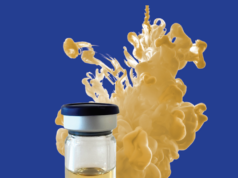NOTE: ONLY intended for healthcare professionals outside of the USA.
Ulf Teichgräber (Jena, Germany) and Koen Deloose (Dendermonde, Belgium) discuss the 24-month results of the EFFPAC trial and the six-month outcomes of the TINTIN trial. Both trials used the luminor drug-coated balloon (DCB; iVascular) with TINTIN testing it in combination with the iVolution self-expanding stent (also iVascular). The latest trial results were presented at CIRSE 2019 (Cardiovascular and Interventional Radiological Society of Europe; 7–11 September; Barcelona, Spain).
Teichgräber, analysing the latest EFFPAC data, points out that luminor is a third-generation DCB with a “very innovative nanotechnology” that is designed to release paclitaxel just at the target lesion.
EFFPAC has shown “outstanding” results in terms of patency (90.2%) and freedom from TLR (97.2%) in the superficial femoral artery and popliteal artery for TASC A and B lesions, and at 24 months, no risk of increased death in the paclitaxel group, says Teichgräber.
The TINTIN trial is a physician-initiated trial evaluating the use of combined treatment with two products that have already “proven their efficacy”, says Deloose—the luminor DCB and the iVolution self-expanding stent—in complex and long lesions (mean lesion length of 24cm), such as those seen in real-world practice. At six months, TINTIN data “showed a clear and good signal” with a 96% primary patency and 98% freedom from target lesion revascularisation in patients with difficult disease, says Deloose.
This video is sponsored by iVascular.













